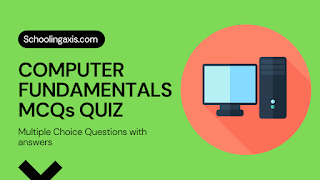1. The field that covers a variety of computer networks, both public and private, that are used in everyday jobs
A. Artificial Intelligence
B. ML.
C. Network Security
D. IT.
Answer = Network Security
2. Network Security provides authentication and access control for resources
A. True
B. False
C. Nothing Can be said
D. None of the mentioned
Answer = True
3. Which is not an objective of network security.
A. Identification
B. Authentication
C. Access control
D. Lock
Answer = Lock
4. Which of these is a part of network identification.
A. UserID.
B. Password
C. OTP.
D. fingerprint
Answer = UserID
5. The process of verifying the identity of a user.
A. Authentication
B. Identification
C. Validation
D. Verification
Answer = Authentication
6. A concern of authentication that deals with user rights
A. General access
B. Functional authentication
C. Functional authorization
D. Auto verification
Answer = Functional authorization
7. CHAP stands for.
A. Challenge Handshake authentication protocol
B. Challenge Hardware authentication protocol
C. Circuit Hardware authentication protocol
D. Circuit Handshake authentication protocol
Answer = Challenge Handshake authentication protocol
8. Security features that control that can access resources in the Os
A. Authentication
B. Identification
C. Validation
D. Access control
Answer = Access control
9. An algorithm in encryption is called _____________.
A. Algorithm
B. Procedure
C. Cipher
D. Module
Answer = Cipher
10. The information that gets transformed in encryption is ____________.
A. Plain text
B. Parallel text
C. Encrypted text
D. Decrypted text
Answer = Plain text
11. The process of transforming plain text into unreadable text.
A. Decryption
B. Encryption
C. Network Security
D. Information Hiding
Answer = Encryption
12. An algorithm used in encryption is referred to as cipher.
A. True
B. False
C. Nothing Can be said
D. None of the mentioned
Answer = True
13. A process of making the encrypted text readable again.
A. Decryption
B. Encryption
C. Network Security
D. Information Hiding
Answer = Decryption
14. WTLS stands for.
A. Wireless Transport Security Layer
B. Wireless Transfer System Layer
C. Wireless Transfer Security Layer
D. Wireless Transport System Layer
Answer = Wireless Transport Security Layer
15. The protocol designed to make the security of wireless LAN as good as that of wired LAN..
A. WTLs
B. WEP.
C. RSN.
D. WP.
Answer = WEP
16. A person who enjoys learning details about computers and how to enhance their capabilities
A. Cracker
B. Hacker
C. App controller
D. Site controller
Answer = Hacker
17. A program created by Farmer and Venema for auditing capability.
A. SAAs
B. SATAN.
C. SAN.
D. SAT.
Answer = SATAN
18. A small program that changes the way a computer operates
A. Worm
B. Trojan
C. Bomb
D. Virus
Answer = Virus
19. A program that copies itself.
A. Worm
B. Virus
C. Trojan
D. Bomb
Answer = Worm
20. An attack in which the site is not capable of answering valid ret.
A. Smurfing
B. Denial of service
C. E-mail bombing
D. Ping storm
Answer = Denial of service
21. A model that is the demo implementation of the system.
A. waterfall
B. prototype
C. incremental
D. agile
Answer = prototype
22. Maintenance is the final phase in waterfall model.
A. True
B. False
C. Nothing Can be said
D. None of the mentioned
Answer = True
23. A stage in which individual components are integrated and ensured that they are error-free to meet customer requirements
A. Coding
B. Testing
C. Design
D. Implementation
Answer = Testing
24. ___________ is a step in which design is translated into machine-readable form.
A. Design
B. Conversion
C. Debugging
D. Coding
Answer = Coding
25. The customer requirements are broken down into logical modules for ease of _______________.
A. inheritance
B. design
C. editing
D. implementation
Answer = implementation
26. What do you call a technical person who is capable of understanding the basic requirements.
A. team leader
B. analyst
C. engineer
D. stakeholder
Answer = analyst
27. A step in waterfall model that involves a meeting with the customer to understand the requirements
A. Requirement Gathering
B. SRs
C. Implementation
D. Customer review
Answer = Requirement Gathering
28. Methodology in which project management processes were step-by step.
A. Incremental
B. Waterfall
C. Spiral
D. Prototyping
Answer = Waterfall
29. An individual who plans and directs the work.
A. Stakeholder
B. Project manager
C. Team leader
D. Programmer
Answer = Project manager
30. A planned program if work that requires a definitive amount of time, effort and planning to complete.
A. Problem
B. Project
C. Process
D. Program
Answer = Project
31. These ciphers replace a character or characters with a different character or characters, based on some key.
A. Polyalphabetic substitution based
B. Transposition-based
C. Substitution based
D. Mono alphabetic substitution based
Answer = Mono alphabetic substitution based
32. Encryption is the study of creating and using decryption techni.
A. True
B. False
C. Nothing Can be said
D. None of the mentioned
Answer = False
33. A type of cipher that uses multiple alphabetic strings
A. Substitution based
B. Transposition-based
C. Polyalphabetic substitution based
D. Mono alphabetic substitution based
Answer = Polyalphabetic substitution based
34. An encryption technique with 2 keys is ______________.
A. Monoalphabetic Cipher
B. Cryptography
C. Private key cryptography
D. Public key cryptography
Answer = Public key cryptography
35. In public key cryptography, a key that decrypts the message.
A. public key
B. unique key
C. private key
D. security key
Answer = private key
36. DES stands for.
A. Data Encryption Standard
B. Data Encryption Statistics
C. Data Encryption System
D. Data Encryption Sequence
Answer = Data Encryption Standard
37. Under DES, the data encryption standard took a 64-bit block of data and subjected it to ______ levels of encryption.
A. 64.
B. 8.
C. 16.
D. 4.
Answer = 16
38. Triple-DES has ______ keys
A. 1.
B. 2.
C. 5.
D. 4.
Answer = 2
39. Encryption standard that is selected by the US government to replace DEs
A. AEs
B. BEs
C. CEs
D. DEs
Answer = AES
40. An electronic document that establishes your credentials when you are performing transactions
A. Digital code
B. OTP.
C. E-mail
D. Digital certificate
Answer = Digital certificate
41. A field of technology that deals with a combination of real world and the data generated from computer.
A. ML.
B. AI.
C. AR.
D. IoT.
Answer = AR
42. AR is interactive in real-time.
A. True
B. False
C. Nothing Can be said
D. None of the mentioned
Answer = True
43. Technologies that completely involve a user inside a synthetic environment.
A. AR.
B. VR.
C. AI.
D. ML.
Answer = VR
44. Technologies that allow the user to see the real world, with virtual objects composited in the real world.
A. AR.
B. VR.
C. AI.
D. SR.
Answer = AR
45. A ______________________ is a display device, worn on head as a part of helmet that has a small display optic.
A. HD.
B. MD.
C. HMD.
D. ARD.
Answer = HMD
46. Wearable computing device in the form of computerized eyeglasses
A. HMD.
B. Helmets
C. Smart Glasses
D. VR Glasses
Answer = Smart Glasses
47. A tracking based on geo-location information.
A. Location based
B. Markerless
C. Marker based
D. GPs
Answer = Location based
48. SLAM stands for.
A. Simultaneous localization and mapping
B. System localization and mapping
C. Simultaneous localization and maintenance
D. System localization and maintenance
Answer = Simultaneous localization and mapping
49. A technique that enables light field which is generally the product of a light source scattered off objects
A. AEs
B. Holography
C. Cryptography
D. Gyrography
Answer = Holography
50. A _______ can be recorded using a normal light source.
A. Holograph
B. Photography
C. Holography
D. Photograph
Answer = Photograph
51. A set of activities that ensure that software correctly implements a specific function.
A. verification
B. testing
C. implementation
D. validation
Answer = verification
52. Validation is computer based.
A. True
B. False
C. Nothing Can be said
D. None of the mentioned
Answer = True
53. ___________ is done in the development phase by the debuggers
A. Coding
B. Testing
C. Debugging
D. Implementation
Answer = Debugging
54. Locating or identifying the bugs is known as ___________.
A. Design
B. Testing
C. Debugging
D. Coding
Answer = Testing
55. Which defines the role of software.
A. System design
B. Design
C. System engineering
D. Implementation
Answer = System engineering
56. What do you call testing individual components.
A. system testing
B. unit testing
C. validation testing
D. black box testing
Answer = unit testing
57. A testing strategy that test the application as a whole.
A. Requirement Gathering
B. Verification testing
C. Validation testing
D. System testing
Answer = System testing
58. A testing strategy that tests the application in the context of an entire system.
A. System
B. Validation
C. Unit
D. Gray box
Answer = System
59. A ________ is tested to ensure that information properly flows into and out of the system.
A. module interface
B. local data structure
C. boundary conditions
D. paths
Answer = module interface
60. A testing conducted at the developer’s site under validation testing.
A. alpha
B. gamma
C. lambda
D. unit
Answer = alpha
61. A ______________ represents the need of information in the program without the presenting the details
A. abstraction
B. polymorphism
C. implementation
D. class
Answer = abstraction
62. Abstraction combines the data and functions into a single unit called a class
A. True
B. False
C. Nothing Can be said
D. None of the mentioned
Answer = False
63. The process of forming a new class from an existing class
A. Abstraction
B. Polymorphism
C. Inheritance
D. Implementation
Answer = Inheritance
64. This concept allows routines to use data again at different times
A. Abstraction
B. Polymorphism
C. Inheritance
D. Implementation
Answer = Polymorphism
65. The ability for programmers to use the same written and debugged existing class
A. Reusability
B. Design
C. Debugging
D. Implementation
Answer = Reusability
66. A concept that combines data and functions into a single unit called class
A. inheritance
B. encapsulation
C. polymorphism
D. abstraction
Answer = encapsulation
67. __________ represents a particular instance of a class
A. module
B. block
C. object
D. token
Answer = object
68. A basic unit of object-oriented programming.
A. module
B. block
C. object
D. token
Answer = object
69. A procedural programming follows ___________ approach.
A. top-down
B. bottom-up
C. left-right
D. right-left
Answer = top-down
70. A programming technique in which the focus is on doing things
A. object oriented
B. procedural
C. logical
D. structural
Answer = procedural

